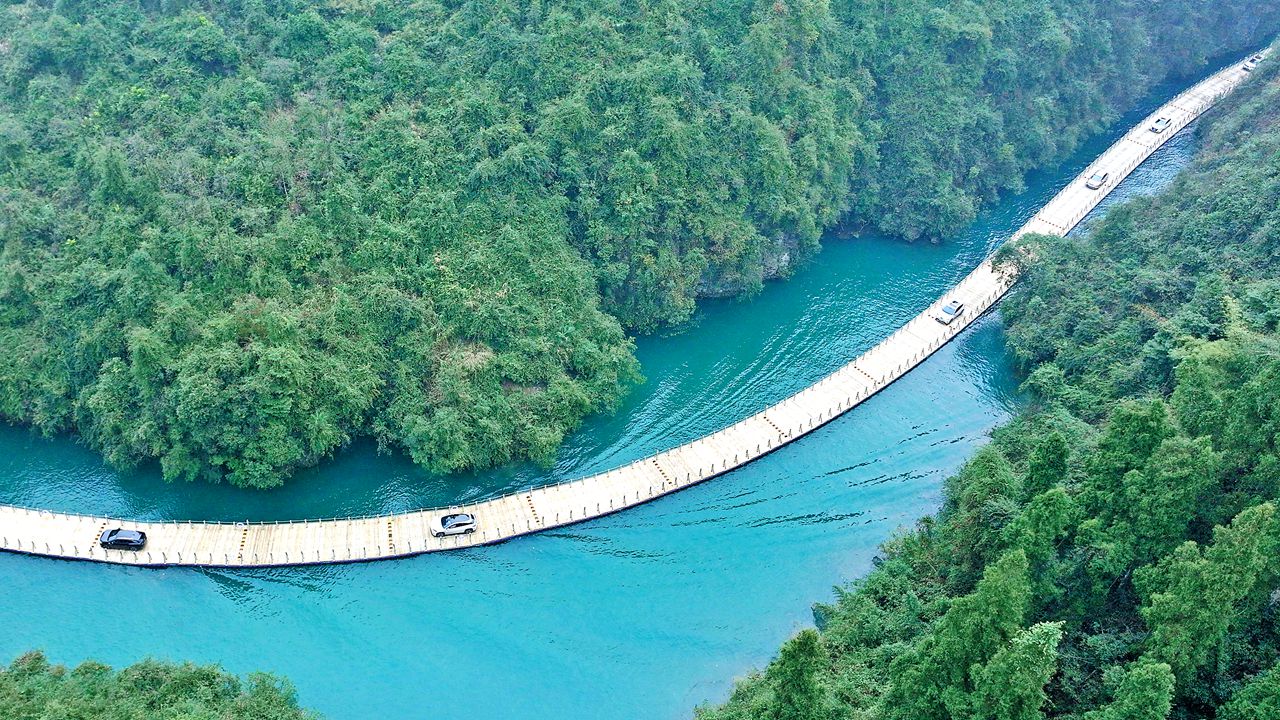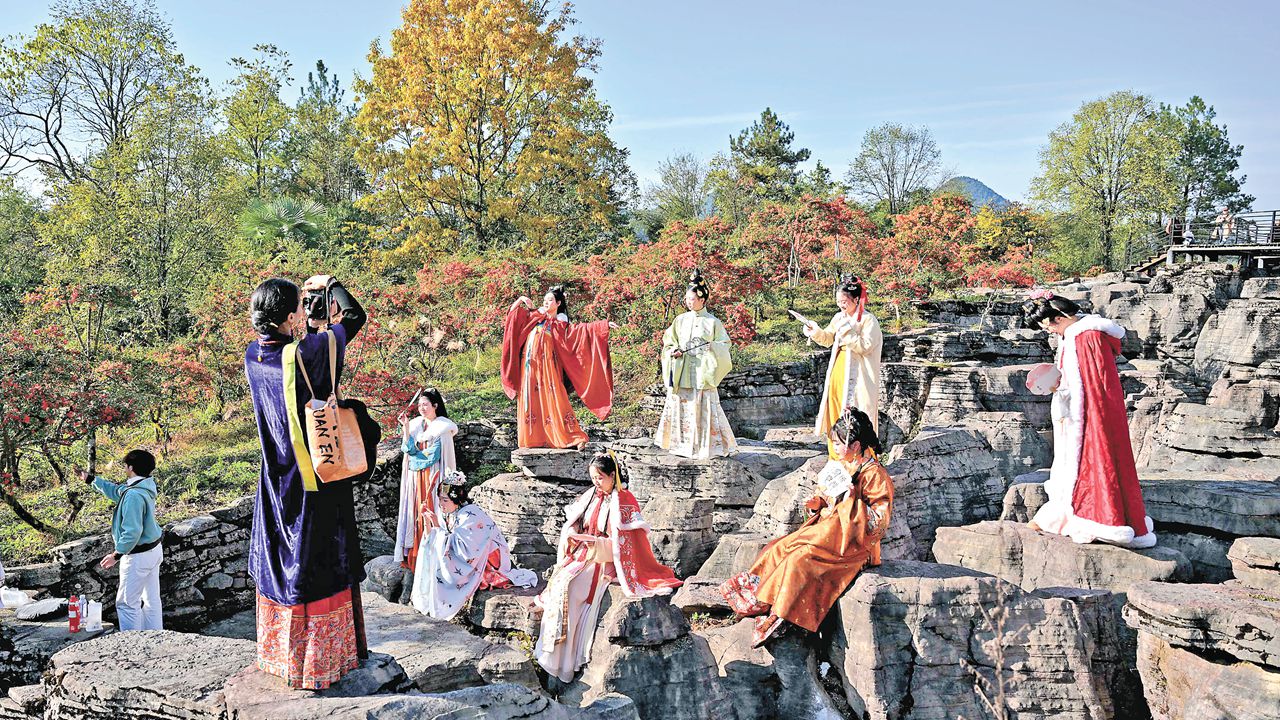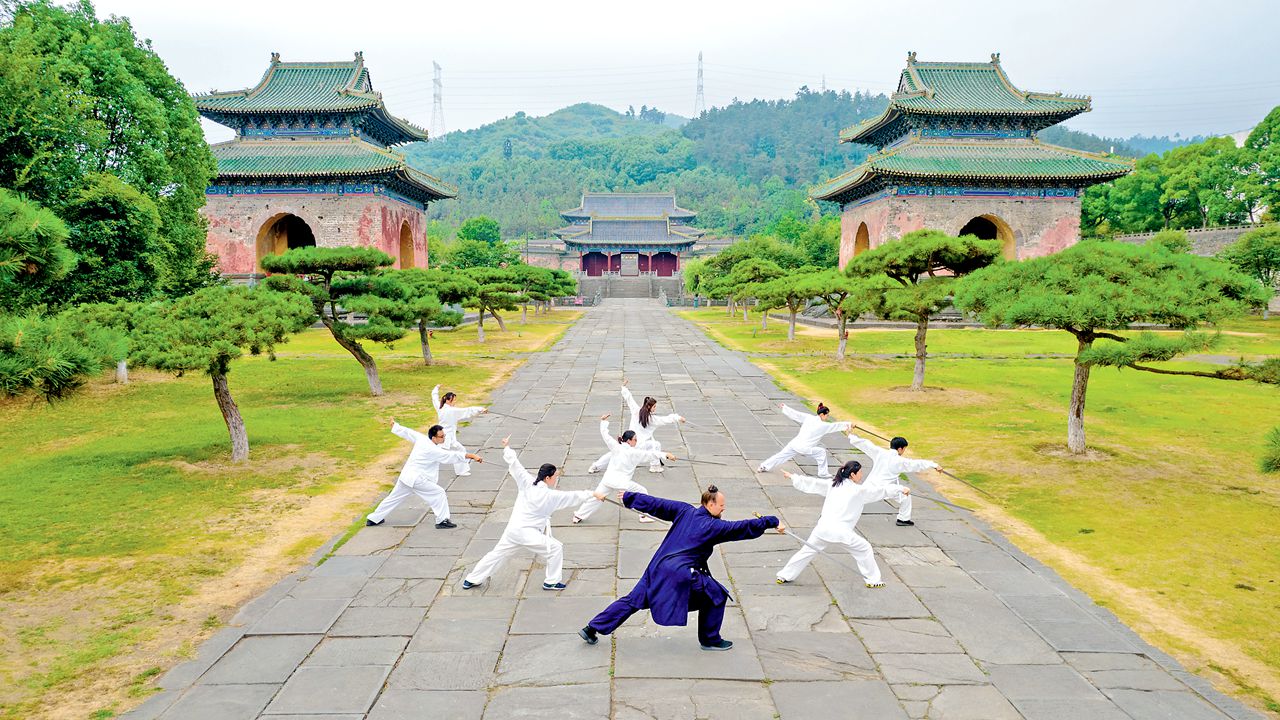Experience history, culture and heritage in Hubei (II)
Writer: Claudia Wei | Editor: Zhang Zhiqing | From: Shenzhen Daily | Updated: 2025-01-13
Hubei Province is located in central China. It is naturally endowed with stunning landscapes featuring unique mountains and beautiful waters. Culturally, its rich history that dated back to the Three Kingdoms Period (220-280) offers a profound array of intangible cultural heritage resources.
Recently, Hubei released a travel guide on “Eight Unique Tourism Routes for Intangible Cultural Heritage,” inviting both domestic and international guests to embark on a journey to the province.
Here we select four routes for you to experience Hubei’s excitement and allure.
Enshi
Enshi is an autonomous prefecture of the Tujia and Miao minority ethnic groups in southwest Hubei Province, renowned for its picturesque natural scenery and unique Karst caves.
Enshi Grand Canyon is covered by lush, primitive forests and offers a cool climate in the summer, making it an ideal destination for escaping the scorching heat. Stretching for 108 kilometers and covering an area of approximately 300 square meters, the canyon is often dubbed the “Oriental Colorado.” This “world geological wonder” boasts rare composite karst landform comprised of geosyncline, sinkhole, and columnar rock groups. It has two major scenic areas: Yunlong Geosyncline and Qixingzhai, a limestone peak forest with 62 limestone peaks and pillars that rise dramatically from the ground, reaching heights of up to 285 meters within a 3-square-kilometer area.

A scene from the Shiziguan scenic area in Enshi, Hubei Province. Photos by Xinhua
The Tenglong Cave scenic area is formed by the Qingjiang River, which flows underground at the foot of Qiyue Mountain in Lichuan. The underground stream spans 16.8 kilometers and descends 165 meters. This subterranean water emerges through Heidong Cave and enters the Xuezhai River. The entrance of Tenglong Cave is 74 meters high and 64 meters wide, and its explored length has reached 59.8 kilometers, making it one of the largest known caves in China and classified as a world-class cave.
In 2005, Tenglong Cave was selected as the most beautiful cave in China by China Geographic magazine. Tenglong Cave integrates mountains, water, caves, and forests, earning fame both domestically and internationally.

Tourists enjoy their time at the Yaotianyan scenic spot in Enshi.
In addition to the natural scenery, Enshi also offers a vibrant and colorful cultural feast, showcasing a rich array of elements of various ethnic groups. Visitors can admire the stilted houses of Tujia people, the wind and rain bridges of the Dong ethnic group, and the July Daughters’ Festival, the rice-harvesting drum performances during plowing time, and the Sa’erhe dance performed as funerals further enrich the cultural experience.
Wudang Mountain
Widely recognized as the No. 1 Taoist mountain in China, Wudang Mountain, also known as Taihe Mountain, has long been a sacred site in the country and the birthplace of Tai Chi.
Located in Shiyan City, Hubei Province, Wudang Mountain is now a major tourist destination that features both stunning natural scenery and rich cultural heritage in northwest Hubei Province. Its main peak, rising as high as 1,612 meters, is often referred to as “a pillar supporting the heavens.” The scenic spot boasts 72 peaks with lush forests, 36 towering cliffs, 24 turbulent ravines, 10 strange stones and nine platforms, offering visitors a rich array of natural attractions. The mountain is frequently enveloped in clouds, providing ever-changing views with various weather conditions.

American Jake Pinick (in blue), a Tai Chi teacher, guides students in a training session at a Taoist temple on Wudang Mountain.
Wudang Mountain is also reputed for its ancient building complexes, with the Taihe Palace being the most celebrated structure. Situated on the highest peak of Wudang, the palace is built about 600 years ago in the Ming Dynasty (1368-1644). It encompasses over 20 ancient buildings, exuding a regal charm. It is a must-visit site for both visitors and pilgrims.
Another notable ancient architecture is the Nanyan Palace, or South Cliff Palace, widely known for the Chinese characters painted in red on the cliff. Nanyan is considered the most beautiful of all the 36 cliffs on Wudang Mountain. The Zixiao Palace, or Purple Cloud Palace, is one of the best-preserved ancient buildings on the mountain. First built between 1119 and 1125, the palace retains its original appearance despite undergoing several renovations. It features countless carvings and paintings of dragons, phoenixes, the sun, the moon, birds, beasts, floras and other elements of nature.
In addition, Wudang Mountain is home to many other ancient complexes worth visiting, including Jingle Palace, Fuguan Palace, Yuxu Palace, Qiongtai Palace, Five-Dragon Palace, and Grind Needle Temple.
The globally reknowned Tai Chi was created on Wudang Mountain by Zhang Sanfeng, who was featured in many martial arts novels, during the end of the Ming Dynasty and the beginning of the Qing Dynasty (1644-1911).
The other four routes included in the “Eight Unique Tourism Routes for Intangible Cultural Heritage” are:
Yichang, best known for Chinese literati Qu Yuan and the Dragon Boat Festival;
Jingzhou, at the heart of power struggles during the Three Kingdoms era;
Huanggang, the birth place of the Huangmei Opera;
Hubei section of the ancient “10,000-Mile Tea Road.”